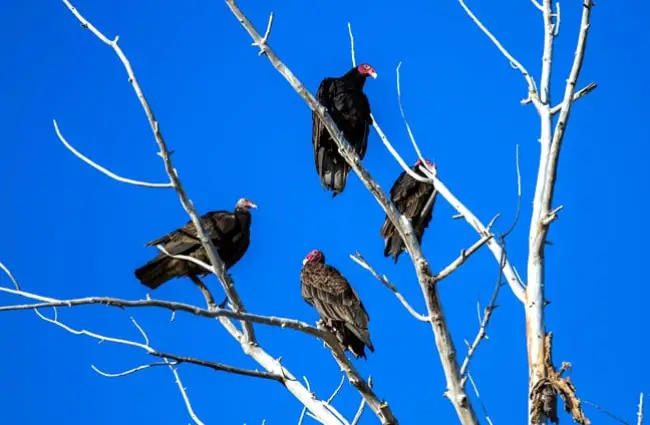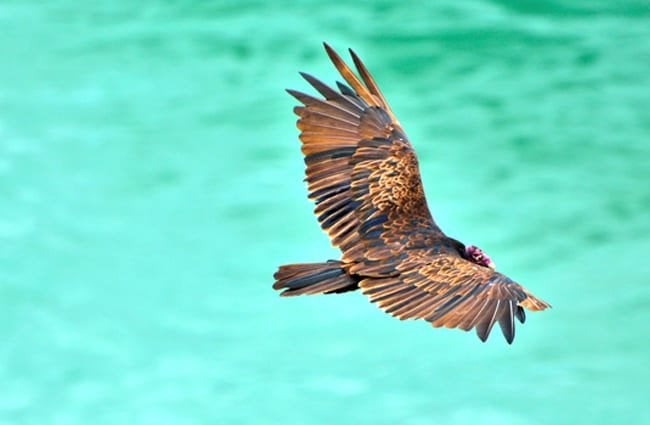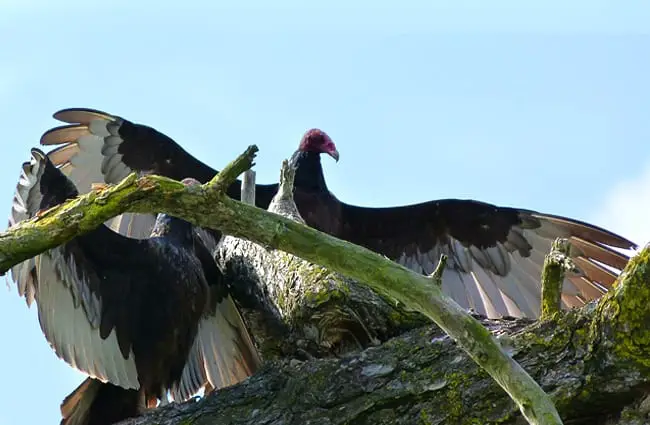Nature’s Efficient Clean Up Crew: A Comprehensive Look at the Turkey Vulture
Few birds evoke such mixed reactions as the Turkey Vulture. Often misunderstood, this remarkable bird plays a critical, and often unseen, role in maintaining the health of ecosystems. Beyond its somewhat macabre diet, the Turkey Vulture boasts an incredible suite of adaptations, a fascinating life history, and a surprisingly complex social behavior. This article delves into the world of Cathartes aura, exploring its biology, ecology, and its interactions with both the natural world and humanity.

Identification and Physical Characteristics
The Turkey Vulture is a medium-sized bird, easily identified by its reddish, featherless head and dark brown to black plumage. It gets its name from its resemblance to the wild turkey, particularly in flight. Adults measure between 26 and 32 inches in length and boast an impressive wingspan of 5 to 6 feet. This large wingspan, coupled with a relatively lightweight body, allows for soaring flight, minimizing energy expenditure. Juvenile birds have a dark head that gradually turns bright red as they mature. A key identifying feature is the silvery secondary feathers visible on the underside of their wings – a visual cue used during flight displays.
Habitat and Distribution
Highly adaptable, Turkey Vultures inhabit a wide range of habitats, from open grasslands and deserts to forests and urban areas. They are found throughout North, Central, and South America, ranging from southern Canada to the southern tip of South America. Their broad distribution reflects their opportunistic feeding habits and ability to thrive in diverse landscapes. They prefer open areas for foraging, as this allows them to scan the ground more efficiently for carcasses. Roosting sites are typically in forested areas, providing shelter and protection from the elements.

The Art of Scavenging: Diet and Feeding Behavior
Turkey Vultures are obligate scavengers, meaning their diet consists entirely of carrion – the flesh of dead animals. This specialized diet has shaped their evolutionary adaptations, most notably their extraordinary sense of smell. Unlike most birds, which rely heavily on eyesight, Turkey Vultures possess a highly developed olfactory system, capable of detecting the scent of decaying flesh from miles away. They locate carrion by soaring at low altitudes and using their sense of smell to pinpoint the source. Their strong stomach acid neutralizes the bacteria and toxins present in decaying meat, allowing them to consume carrion without getting sick. They often feed in groups and readily share a carcass with other vultures and scavengers.
Life Cycle: Mating, Nesting, and Raising Young
Turkey Vultures typically form lifelong pair bonds. Breeding season varies depending on location, but generally occurs in the spring and summer. Courtship displays involve soaring, gliding, and vocalizations. Nesting sites are usually located in sheltered places such as caves, hollow logs, or abandoned buildings. They do not build elaborate nests, laying 1 to 3 eggs directly on the substrate. Both parents participate in incubation, which lasts about 30 to 40 days. Chicks are altricial, meaning they are born helpless and require extensive parental care. Young vultures fledge, or leave the nest, at around 65 to 75 days old, but remain dependent on their parents for several months.

Ecological Role and Interactions
As scavengers, Turkey Vultures provide a vital ecosystem service by removing carrion, which helps prevent the spread of disease and reduces the risk of contamination. They play a crucial role in nutrient cycling, returning essential elements to the soil. They often congregate with other scavengers, such as Black Vultures, creating a complex foraging guild. While Turkey Vultures typically avoid confrontations, they can sometimes be displaced by the more aggressive Black Vultures. They also interact with other animals, such as mammals and reptiles, that benefit from the removal of carrion.
Evolutionary History
The family Cathartidae was once thought to be related to raptors, but molecular studies show that these birds are more closely related to storks. This evolutionary relationship indicates that an ancestral stork lineage adopted a scavenging lifestyle. Their unique anatomical and physiological adaptations – such as the featherless head and highly developed sense of smell – are evidence of this divergence. Fossil records provide further insights into the origins of this remarkable bird, tracing its lineage back millions of years.

Turkey Vultures and Humans
Throughout history, Turkey Vultures have held various cultural and practical roles in human societies. Some cultures view them as symbols of death or omens, while others recognize their ecological importance. They have been used in traditional medicine and as indicators of environmental health. However, they also face threats from human activities, such as habitat loss, poisoning, and collisions with vehicles. Conservation efforts are crucial to ensure the long‑term survival of this valuable species.
Encountering a Turkey Vulture: What to Do
If you encounter a Turkey Vulture, it’s best to observe it from a distance. They are generally harmless to humans and pose no threat unless provoked. They are primarily focused on finding food and are not interested in interacting with people. However, it’s important to avoid approaching or feeding them, as this can alter their natural behavior. If you find a sick or injured vulture, contact a local wildlife rehabilitator for assistance.
Caring for Turkey Vultures in Captivity
Caring for Turkey Vultures in captivity requires specialized knowledge and facilities. They need a large flight enclosure that allows for soaring and gliding. Their diet should consist of fresh carrion, supplemented with vitamins and minerals. Enrichment activities, such as providing different types of carcasses and puzzle feeders, are essential to stimulate their natural foraging behavior. Maintaining a clean and hygienic environment is crucial to prevent the spread of disease. Regular veterinary check‑ups are also important to monitor their health and well‑being.

Fascinating Facts
- Turkey Vultures can live for over 25 years in the wild.
- They can soar at altitudes of up to 10,000 feet.
- Their keen sense of smell allows them to detect gas leaks and other sources of odor.
- They can travel hundreds of miles in search of food.
- They often roost communally with other vultures, forming large flocks.
- Young vultures learn foraging techniques from their parents.
- Their featherless head helps keep them clean while feeding on carrion.

Conclusion
The Turkey Vulture is a remarkable bird, deserving of our respect and admiration. Its unique adaptations, ecological role, and fascinating life history make it a truly exceptional creature. By understanding and appreciating this often‑misunderstood species, we can contribute to its conservation and ensure its continued survival for generations to come.

![Red Angus Closeup of a beautiful Red Angus cowPhoto by: U.S. Department of Agriculture [pubic domain]https://creativecommons.org/licenses/by/2.0/](https://animals.net/wp-content/uploads/2020/03/Red-Angus-4-238x178.jpg)




![Red Angus Closeup of a beautiful Red Angus cowPhoto by: U.S. Department of Agriculture [pubic domain]https://creativecommons.org/licenses/by/2.0/](https://animals.net/wp-content/uploads/2020/03/Red-Angus-4-100x75.jpg)

